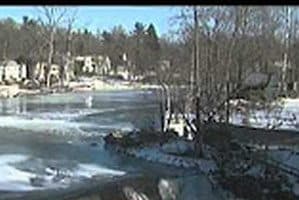
PCB Contamination Risk For Cancer And Other Health Effects. People living near the Dewey Loeffel Landfill, which for decades served as a dumping ground for polychlorinated biphenyls (PCBs) and other toxic substances, may be at risk for cancer and other health problems. The Dewey Loeffel Landfill, located near the village of Nassau in Rensselaer […]

PCB Contamination Risk For Cancer And Other Health Effects. People living near the Dewey Loeffel Landfill, which for decades served as a dumping ground for polychlorinated biphenyls (PCBs) and other toxic substances, may be at risk for cancer and other health problems. The Dewey Loeffel Landfill, located near the village of Nassau in Rensselaer County, NY, was added to the Environmental Protection Agency’s (EPA) Superfund list in March 2011. Though the Dewey Loeffel Landfill was closed in the 1970s, and was capped with clay in 1984, toxic chemicals continued to seep into groundwater, while runoff from PCB-contaminated soil made its way into nearby Nassau Lake.
If you live near the Dewey Loeffel Landfill, and someone in your family suffers from cancer or other ailments that could be related to PCB exposure, you may be entitled to compensation. Lawyers at our firm who specialize in PCB litigation are offering free consultations to victims of the Dewey Loeffel Landfill. To learn how we can help you, please contact us today.
The Dewey Loeffel Landfill, a 16-acre unlined dump, is located 4 miles from the village of Nassau. From 1952 until 1968, the Dewey Loeffel Landfill was used for disposal of more than 46,000 tons of waste materials generated by several companies, including General Electric (GE), Bendix Corporation and Schenectady Chemicals. The site had been listed as a State Superfund pollution program since 1980, with the New York Department of Environmental Conservation responsible for cleanup efforts. The state asked the EPA to take over the project under federal Superfund in 2009.
In 1968, the State of New York ordered the operator of the Dewey Loeffel Landfill to stop discharges from the landfill and to perform cleanup work. According to the EPA, from 1982 to 1984, GE removed approximately 500 drums and four 30,000-gallon oil storage tanks from the landfill and a slurry wall, clay cap, and leachate collection system were installed. Between 2001 and 2004, GE removed 15,000 tons of PCB-contaminated soil and sediment from the facility. New York State has also established monitoring programs for residential wells, ground water, surface water, sediment and fish.
Three decades after the initial cleanup of the Dewey Loeffel Landfill began, with PCBs still leaking from the site, the EPA took over the cleanup, and added the dump to its Superfund National Priorities List of the country’s most hazardous waste sites. After the state of New York requested the EPA add the Dewey Loeffel Landfill to the federal Superfund list, the agency collected sediment samples from various water bodies, which revealed the presence of PCBs. The New York State Department of Health now has a health advisory in place for Nassau Lake, which advises people not to eat any fish from the lake because of PCB contamination.
For decades, PCBs were widely used as insulating agents in electrical equipment, including transformers and capacitors. PCBs were also used in building materials, including caulk, insulation and floor products, and consumer product such as plastics, adhesives and tapes, and oil based paint. Though PCBs were banned in 1979, the chemicals are resistant to environmental degradation, so they can persist in the environment for decades.
According to the U.S. Centers for Disease Control (CDC), human health studies indicate that PCB exposure can disrupt reproductive function, and in utero exposure can lead to neurobehavioral and developmental deficits in newborns and continue through school-aged children. Other systemic effects, including liver disease and diabetes, and effects on the thyroid and immune systems are associated with elevated serum levels of PCBs. Increased cancer risks, including non-Hodgkin’s lymphoma, are also associated with PCB exposures, the CDC says.
According to a report from CleanupGE.org, because they are long-lived, semi-volatile and don’t dissolve in water, PCBs can travel long distances. PCBs are also fat-soluble, which means that they concentrate as they move up the food chain. Animals at the top of the food chain – especially marine mammals like polar bears and dolphins – have dangerously high levels of the chemical, which they lack the ability to detoxify. PCBs regularly top the list of chemicals found in human tissue surveys.
The personal injury attorneys at Parker Waichman LLP offer free, no-obligation case evaluations. For more information, fill out our online contact form or call 1-800-YOURLAWYER (1-800-968-7529).


